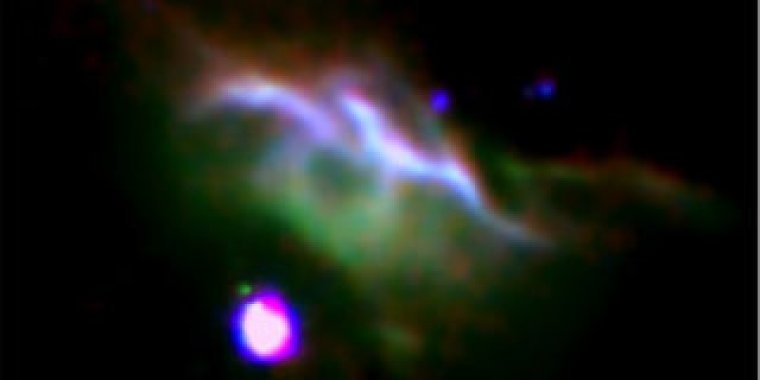| News / Science News |
“Kitchen Smoke” Molecules in Nebula Offer Clues to the Building Blocks of Life
NASA | AUGUST 23, 2016
Using data collected by NASA’s Stratospheric Observatory for Infrared Astronomy (SOFIA) and other observatories, an international team of researchers has studied how a particular type of organic molecules, the raw materials for life – could develop in space.

Combination of three color images of NGC 7023 from SOFIA (red & green) and Spitzer (blue) show different populations of PAH molecules ![]()
The researchers of Leiden University in the Netherlands focused on a type of molecule called polycyclic aromatic hydrocarbons (PAHs), which are flat molecules consisting of carbon atoms arranged in a honeycomb pattern, surrounded by hydrogen.
PAHs make up about 10 percent of the carbon in the universe, and are found on the Earth where they are released upon the burning of organic material such as meat, sugarcane, wood.
The team determined that when PAHs in the nebula NGC 7023, also known as the Iris Nebula, are hit by ultraviolet radiation from the nebula’s central star, they evolve into larger, more complex molecules. Scientists hypothesize that the growth of complex organic molecules like PAHs is one of the steps leading to the emergence of life.
Some existing models predicted that the radiation from a newborn, nearby massive star would tend to break down large organic molecules into smaller ones, rather than build them up. To test these models, researchers wanted to estimate the size of the molecules at various locations relative to the central star.
The analysis indicates that the size of the PAH molecules in this nebula vary by location in a clear pattern. The average size of the molecules in the nebula’s central cavity, surrounding the illuminating star, is larger than on the surface of the cloud at the outer edge of the cavity.
The team concluded that this molecular size variation is due both to some of the smallest molecules being destroyed by the harsh ultraviolet radiation field of the star, and to medium-sized molecules being irradiated so they combine into larger molecules.
Researchers were surprised to find that the radiation resulted in net growth, rather than destruction.
YOU MAY ALSO LIKE



